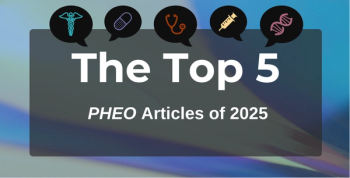
Tocilizumab Leads to Improvement in Patients With Active Polymyalgia Rheumatica Despite Prednisone Therapy
However, patient-reported scores were not significantly better in the tocilizumab group.
Tocilizumab (Actemra) appears to lead to meaningful results in patients with
People with polymyalgia rheumatica experience pain and stiffness in the shoulder and pelvic girdles. The condition typically occurs between the ages of 50 and 80 years, although only about 2% of men and women will experience the condition, explained the authors of a new study
Polymyalgia rheumatica is typically treated with glucocorticoids, but the investigators said half of patients will experience a relapse during the first year and a quarter need treatment for 4 to 8 years.
“Alternative effective therapeutic strategies that avoid adverse effects associated with long-term glucocorticoid prescriptions are needed,” they said.
One potential new treatment option is tocilizumab. The therapy is a humanized anti-interleukin 6 receptor that in open-label phase 2 studies has been associated with improved disease activity and a lessened need for glucocorticoids.
In the new report, the investigators describe the results of their phase 3 placebo-controlled SEMAPHORE (Safety and Efficacy of Tocilizumab vs Placebo in Polymyalgia Rheumatica With Glucocorticoid Dependence) trial, which was designed to evaluate tocilizumab in patients who were dependent upon glucocorticoids to control their polymyalgia rheumatica.
The investigators recruited 101 people with polymyalgia rheumatica who had persistent disease activity and were taking at least 10 mg/d of prednisone. Those patients were randomized to receive either 8 mg/kg of tocilizumab every 4 weeks for 24 weeks or placebo. The primary end point was based on polymyalgia rheumatica activity score computed C-reactive protein levels (CRP PMR-AS). Patients needed to have scores above 10 to be included in the study, and the primary outcome of the trial was a score lower than 10 following therapy and a prednisone dose below 5 mg/d or a dose reduction of at least 10 mg/d from baseline to 24 weeks.
The patients had an average age of 67.2 years, and 67.3% were women. Two-thirds of patients (67.3%) in the tocilizumab group achieved the primary end point compared with 31.4% in the placebo group (adjusted relative risk, 2.3 [95% CI, 1.5-3.6]; P < .001). Tocilizumab also outperformed placebo in 7 of the 11 secondary end points, which included the number of patients no longer taking prednisone (49.0% in the tocilizumab group vs 19.6% in the placebo group). Infections were the most common adverse events (23 patients in the tocilizumab group and 20 patients in the placebo group).
The authors noted that prednisone tapering was not attempted until after week 8 of the trial. They said most of the benefits in the placebo group appeared before week 8, but the effects of tocilizumab were mostly noted following the first 8 weeks.
Although the study showed tocilizumab met the composite end point of the study, the investigators said patient-reported outcomes were not significantly different between the 2 groups.
“This discrepancy suggests that patients with polymyalgia rheumatica who are dependent on glucocorticoids may not be aware of improvement from tocilizumab and requires further study,” they wrote. “It also suggests that benefits from tocilizumab may not be large.”
Rates of disease remission were also not significantly different between the 2 groups.
The investigators said the limitations of their study included that people with certain health conditions or abnormal laboratory tests were excluded from the study and that the results might not be generalizable to all patients with polymyalgia rheumatica. They concluded that further research is warranted to better understand the benefits and drawbacks of the therapy.
Reference
Devauchelle-Pensec V, Carvajal-Alegria G, Dernis E, et al. Effect of tocilizumab on disease activity in patients with active polymyalgia rheumatica receiving glucocorticoid therapy. JAMA. JAMA. 2022;328(11):1053-1062. doi:10.1001/jama.2022.15459
Newsletter
Stay ahead of policy, cost, and value—subscribe to AJMC for expert insights at the intersection of clinical care and health economics.







































